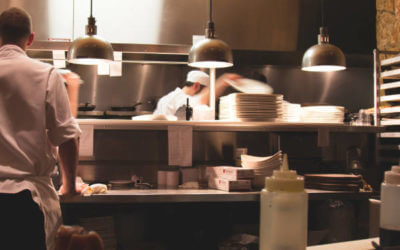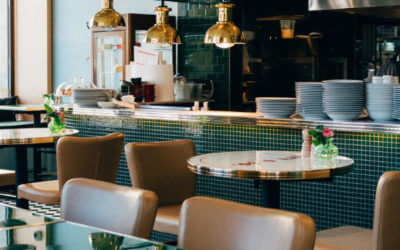Be Proactive: Assess and Address Risks in Your Restaurant
November 1, 2018As a restaurant owner or manager, you have a lot on your mind. You want employees to show up on time and ready to give great service. You want your food to be well-stocked, high quality, and ready to use.
With all of these moving parts, there are a lot of risks. You know that accidents are a fact of life, but what you may not know is that you can plan ahead for them. When you identify and minimize risks, you’ll save yourself time and money.
Here’s what you can do!
Front of the House
In the front of the house, you have the risk factors that affect your guests and servers. Take some time to walk around and notice if there are any gaps in the carpet, curled edges of rugs, or uneven floors.
You also want to make sure there are protocols in place for spills and broken dishes and glasses. Finally, think about the wet floors that can occur if it’s raining or snowing outside.
Other risk factors include the spacing of tables and chairs and the emergency processes you have in place if a guest has a medical emergency.
Finally, think about where guests and employees should go if there’s a tornado, and what the exit routes are in case of a fire. These ways should be clearly marked and employees should be trained and practice regularly!
While each of these elements represents a small risk, they are all things that should be addressed. There should be a plan in place if at all possible!
Back of the House
This is where your kitchen equipment is, and it’s the place with the most obvious risks as well. You want to be sure no equipment malfunctions, from stoves to refrigerators.
Cooks and back of house employees should wear non-slip shoes and be aware of all safety processes. They should use the kitchen equipment as intended. While there’s no problem with having fun during work, be sure they understand the importance of staying safe!
From fryers to knives to flattops and ovens, your kitchen equipment poses the most risk in your restaurant. Electrical shorts can cause fires, as can grease or too much food residue.
Address these risks with clear protocols on how to use everything in the kitchen, and easy-to-use emergency instructions in case something goes wrong.
Working Kitchen Equipment & Supplies are Essential
One of the biggest risks is when restaurant owners let equipment go too long without repairs or replacement.
Getting better kitchen equipment doesn’t have to be expensive. High-quality used items can save you money and keep your restaurant running smoothly.
Do you need help getting the right equipment for the right price? We’ve been serving Little Rock restaurants for years and we’d love to help you too. Contact us for more information today!
Kitchen Fun : Food and the Oscars
Hollywood’s biggest night was February 24th, 2019, and was it ever a show. There were stars, glitz, glamour, and amazing outfits everywhere. There were also cameras catching every moment, from the red carpet to the after-parties. What happened at the show and after...
4 Keys to Successful Commercial Kitchen Design
If you’re opening a new restaurant or renovating your existing kitchen, you probably already have some ideas about how it should look. However, it’s important to look beyond your own ideas and understand the keys to good design in general. This will help you...
Bring Together Your Back and Front of House
Does your restaurant feel like a simmering battle between the back of house (BOH) and front of house (FOH)? Or do both units get along famously? If your restaurant is like many, you find yourself somewhere in the middle. Rarely do you have an all-out war, but...



